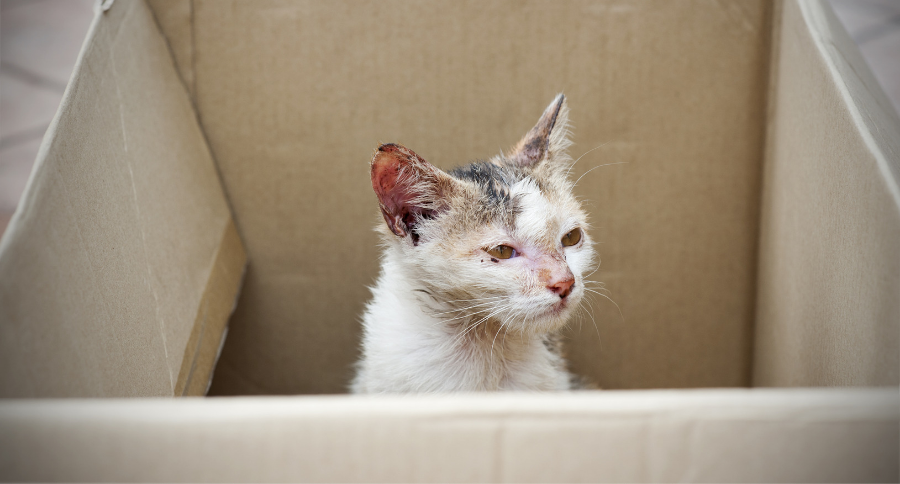Mange in cats is rare but there are specific breeds at a higher risk. When I worked at a clinic, I saw many cases of mange in dogs, but not that many in cats!
So what is it? I think PetMD.com has the best definition by far as mange is an inflammatory disease in cats (and dogs).
"Demodicosis, or demodectic mange, is an inflammatory skin disease in cats that is caused by various types of Demodex mites not visible to the naked eye. Demodex mites are commonly found on the skin of mammals, and in most cases are not symptomatic of an abnormal condition, but when the immune system is compromised, by stress or illness, or the body is producing excess oil or hormones, the Demodex population may become excessive, leading to skin and hair problems."
The two mite species that PetMD talks about that cause mange in cats are:
- Demodex gatoi, is potentially contagious and may be transmitted between cats in the same household.
- Demodex cati, is associated with diseases of the immune and metabolic systems, such as diabetes. It has been found in some cases that an impaired immune system or hormone imbalance will allow the Demodex mite to overpopulate.
The other common type of mange is due to Scabies Sarcoptes (red mange) mites. These are characterized as one of the single most itchy diseases cats can get. The two breeds that are at higher risk are Siamese and Burmese cat breeds.
Cats can get mites (Demodex cati) from other cats! Every cat needs to be treated as a result. Cats that are immunocompromised may be more susceptible to an overgrowth of Demodex and that mite isn't contagious between cats.
What does mange look like in cats?
Similar to what it looks like, in dogs, symptoms may include hair loss around the eyelids, head, and neck. Additionally, lesions on the skin, scales, and crusty patches may appear.
You will see your cat itching constantly.
What are the symptoms of mange in cats?
https://www.instagram.com/p/B3we-lgFqBN/
The Spruce Pets tells us that these symptoms will also cause some restlessness, irritability, and soreness.
"Symptoms can occur about one week after exposure and will worsen if the mange is not treated."
- Itching and scratching
- Greasy face
- Swelling
- Scaling around the face, neck, and eyelids
- Skin discoloration
- Bumps on the skin
- Excessive licking or grooming
- Hair loss
- Restlessness
A vet will perform a 'skin scrape' and look at the skin cells under a microscope. Both Scabies and Demodex can be determined by their shape and the vet will let you know which type of mite you're dealing with! A urine test is done as well.
How is mange treated in cats?
https://www.instagram.com/p/BnwQ7iDl9k8/
Your cat may need antibiotics or medication if he has a bacterial infection from scratching the skin raw around the ears and something to kill any mites that have spread to other areas of the body. Each type of mite has a different treatment protocol and this article helps explain the treatment for the various mites.
Dr. Karen Becker also has a great video about this topic and since mites in cats are rare she summarized what you need to know. Some vets won't even look for mites in cats when you present a cat that is itching so it's good to be aware of this! Dr. Becker also talks about a lime sulfur dip for cats.
You must keep your cat clean! This disease though can also be a genetic condition so even keeping them clean may not prevent this from occurring. A mite infestation is terrible whether's it's cats, dogs or even chickens.
When you see your cat's skin get super red, scaly and patchy you should immediately make a trip to the vet. If it's not mange mites it'll likely be another parasite. There are so many types of mange and luckily cat mange isn't nearly as common as dog mange. There is nothing more miserable that the intense itching that happens needs to be broken asap.
Do you know anyone that has a cat that recovered from mange? Please let us know in the comments.
Watch Now: Maine Coon Cats Are Big Cats!





